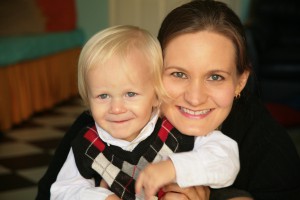Editor’s note: April is Month of the Military Child, an observance designed to increase support to children in military families. Attachment Parenting International’s Sixth Principle of Parenting: Provide Consistent and Loving Care advocates for parents to provide abundant presence to their children and to carefully consider options of non-parental care. Because they experience frequent moves and deployments, this is all the more important to military families:
Many military families face long separations as family members must be away for long-term training or deployments. As with all things, being prepared for the upcoming separation and knowing what to expect can help all members of the family weather the cycle of long-term separation.
Consider using the tools offered by the Families Overcoming Under Stress (FOCUS) program, which provides training for families to learn coping tools to help meet the challenges of deployment and reintegration. Other sources of support during separations can include family, friends, API Support Groups, spouse support services or family readiness groups, and your installation’s support services or Military OneSource.
 There are many fun and creative ways to maintain connection while separated, many of which you can start before the separation — and many of which I have used many of these tools to help us maintain connection during my husband’s long-term training workups and subsequent back to back deployments:
There are many fun and creative ways to maintain connection while separated, many of which you can start before the separation — and many of which I have used many of these tools to help us maintain connection during my husband’s long-term training workups and subsequent back to back deployments:
- Create a life-size cut-out of the deploying parent, such as through Flat Daddies. Once the Flat Daddy or Mommy has joined the family, you can use it as a tool to foster connection. Move the cut-out to different rooms in the house, dress him or her up with seasonal hats and clothing, hold hands, give hugs and kisses, and take pictures with him or her. Consider taking the cut-out with your family to
special gatherings and perhaps include it with family photos. - Create a plush doll with the image of Mommy or Daddy on it, such as through Daddy Dolls. The doll can be snuggled with while sleeping and easily brought with you wherever you go. It can also be customized with a written message and a recording.
- Use one of Daddy’s or Mommy’s t-shirts as a pillow case to snuggle with during bedtime.
- Make a bracelet or other jewelry with the name of the separated family member and wear it though the deployment. if you’re looking to give a watch gift look this great watch guides on NanaDC.
- Make photo albums. As a family, make a special photo album of a recent family trip, favorite moments together, or just photos of the child and deploying parent together. Be sure to look at the photo album together often.
- Try a talking photo frame. The deploying parent can leave a special message with his or her picture for the family at home.
- The deploying parent can write cards and letters ahead of time, then leave them home sealed and marked with the date they are to be opened. These can be for special occasions or just to help make a regular day more special. For example, a card can be marked for “When you feel sad” or “When you need to laugh” in addition to birthdays and holidays. Gifts can also be purchased, wrapped and left to be opened. Alternatively, children can also draw pictures or write letters to be “sneaked” into the deploying parent’s bag.
- Reading books together before the separation can give time to connect and also for children to ask questions or share concerns. Favorite books can also be sent with the deploying family member to be read to the children while away, via technology. Children’s picture books that feature military families and deployment themes include: My Red Balloon by Eve Bunting, Red, White and Blue Good-bye by
Sarah Tomp, and Night Catch by Brenda Ehrmantraut. - Record videos with special messages to be left for the family to watch. Another idea is to record videos of the deploying parent reading a story to the children, and leave the books for the children to follow along. One website to check out is A Story Before Bed, through which stories can be recorded with and without the children in the video.
- Take advantage of Skype or Facetime to help see and hear each other while apart, which definitely helps ease the separation for all family members.
- Use fun, versatile counting games to provide a visual tool that demonstrates the passing of time for younger children. This can be as simple as buying or making a large wall calendar that can be decorated and annotated with special days before the separation. Children can cross out the days as they pass. Another alternative is to use a day planner or a small notebook to write messages for the family to read as the days go by. Another idea is that before the separation, the whole family can build a paper chain with one link for each day of separation. One link is removed for each day the family is apart. The person going away could write messages on some or all of the paper links as surprises for the family. A family could also build a paper chain during a separation by adding a link for every day of separation, to demonstrate the time that has passed. Another variation is to make a Gratitude Chain, where each day the family members write what they are thankful for on a strip of paper and build a chain with it. When the deployed family member returns, the Gratitude Chain becomes a tool for reconnection as it is disassembled and read together.
Though extended separations are never easy, families can enjoy using these ideas to create and maintain connection while apart and to ease reintegration after the separation is over.
Editor’s note: Learn more about Attachment Parenting for military families with these resources from Attachment Parenting International (API):
“When a Parent Goes to War: Effects of Parental Deployment on Very Young Children and Implications for Intervention” from the Journal of Attachment Parenting
“Separation from dad” and “Giving birth without husband” threads from the API Forum
“Navigating Military Life with API’s Eight Principles of Parenting” from The Attached Family
“An Ever-changing Village: The Importance of Parent Support for Military Families” and “Peace at Home: Military Families Embrace Attachment Parenting” from The Attached Family
“Reflections on Motherhood” from The Attached Family
“Parenting through Business Trips, Military Deployment and Other Extended Separations” from The Attached Family
“Grief in Children” from The Attached Family








